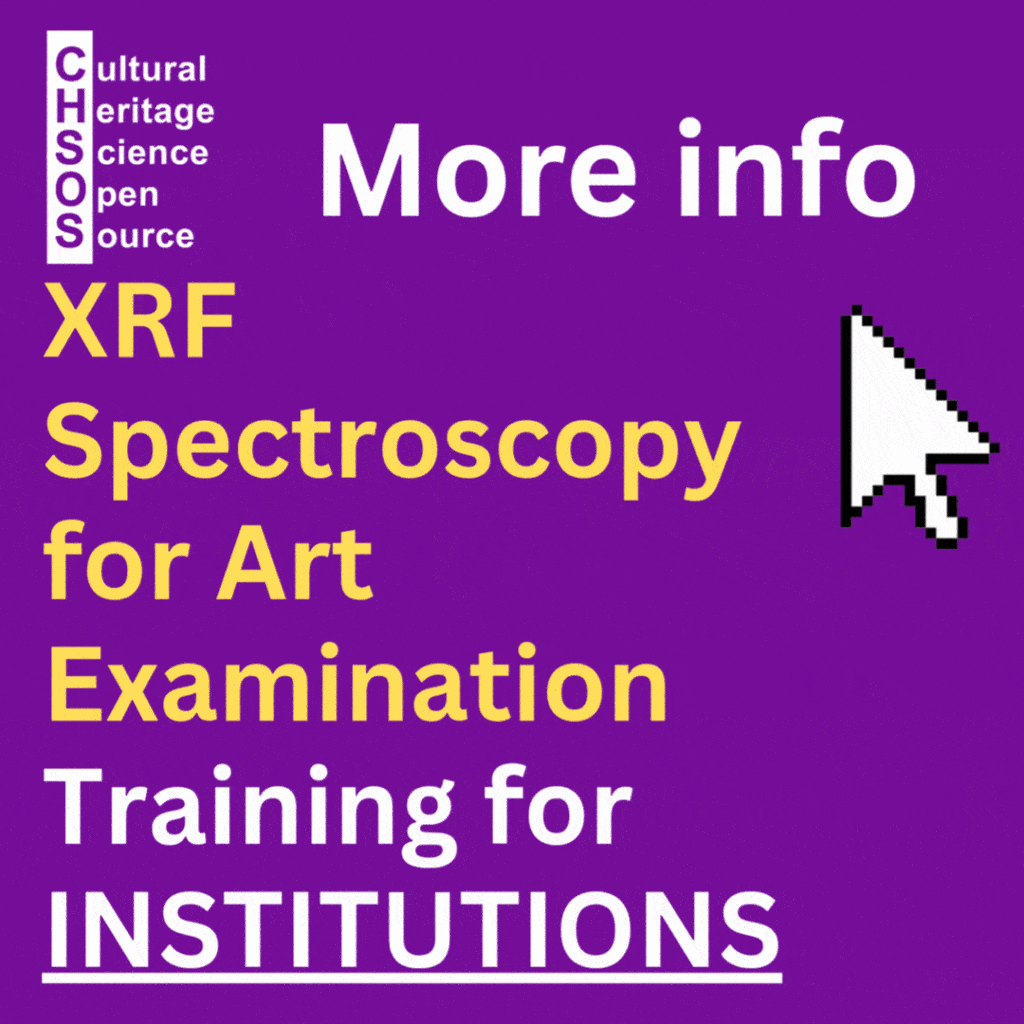Pigments Checker v.4
Download this page as a pdf Pigments Checker (6359 downloads )
Updates to Pigments Checker version 4
We added 11 pigments in latest Pigments Checker v.4 and pigments are now arranged in chronological order. New pigments: stil de grain, arylide yellow 5GX, vermilion(artificial), vivianite, curcuma, manganese violet, han blue, ultramarine(artificial), iron gall ink, sepia, alizarin. Check out the new Technical Photography images and the new Reflectance spectra.

In Brief
Pigments Checker is a collection of pigments important in art history. Among all the pigments and their varieties ever used in art, this collection selects the most used from antiquity to early 1950’. Pigments Checker is a standard tool designed for Art professionals, scientists, students and conservators to evaluate and practice non-invasive techniques for pigments identification.
Criteria for selecting the pigments’ collection
One of each kind. There are plenty of version of the same pigments. For example, the earth pigments: red and yellow ochre as well as umber, sienna and green earth. Earth pigments extracted from different locations have slightly varying mineral content and they have been marketed over the centuries, with specific names, such as Pozzuoli red and Sinopia. Both are red ochre pigments, but from, respectively, Naples area and Cappadocia. They are characterized by their common iron oxides content but different proportions of other minerals accounting for their different hues. Pigments Checker collects just one pigment for each kind. It features just one red ochre, one yellow ochre and so on. Pigments Checker is an education tool for students and art professional learning pigments identification with affordable and simple technical tools. Distinguish among varieties of red ochre is possible but requires more advanced and costly equipment.
Highest quality. We constantly evaluate the quality of the pigments provided by a number of vendors using spectroscopic analysis. We want to be sure that Pigments Checker features best quality pigments.
Mineral and artificial. Natural ultramarine and artificial ultramarine, cinnabar and vermilion, madder lake and alizarin. These are some examples of mineral and organic pigments which eventually were produced artificially. Pigments Checker features both the natural (mineral or organic) and the artificial versions. It is of the most interest to distinguish natural pigments from their artificial counterparts for dating works of art. This can be achieved from microscopic and spectroscopic observations (different impurities and crystal forms).
Old recipe. We choose pigments manufactured following original recipes.
Chemical quality check. An international team of Laboratories and Research Groups involved in Scientific Art Examination are collaborating with CHSOS to evaluate the chemical composition of each pigment. This data contributes to the Free and Downloadable spectral database of the pigments used in Pigments Checker: Raman, XRF, FTIR and XRD.
Pigments’ Table (version 4)
Check out the list of pigments and browse their spectra and other relevant information.
Pigments’ Timeline
Pigments Checker - Timeline (8313 downloads )Pigments Checker Timeline provides a simplified representation of the use of the pigments across ages. Pigments’ history is actually quite complex and depends on a number of factors; The kind of artifacts. A pigment can be used on wall paintings while becoming obsolete in easel paintings. Geography. As an example, natural cinnabar is found in Almaden (Spain) and Murillo used it since it was close to him, rather than the artificial form, vermilion, much more diffused elsewhere.
Features
Cardboard: cellulose and cotton watercolor paper, acids and lignin free, not treated with optical brigtheners. Slightly ultraviolet fluorescent, it reflects infrared radiation.
Swatches: 2 cross-hairs (0,2 mm) printed on each swatch of paper before application of paint, to evaluate pigments’ transparency in infrared photography.
We made Pigments Checker more durable adding a rigid finnboard support (pure wood pulp, 3 mm).

Pigments Checker comes with our new Multispectral Imaging calibration card. Commercial gray cards for photography cannot be used for multispectral imaging since they absorb near UV and violet radiation. We developed a gray card to cover the 400-1000 nm spectral range. Take our Training program and Learn how to use the calibration card with our Multispectral Imaging system.
How to take care of your Pigments Checker?







